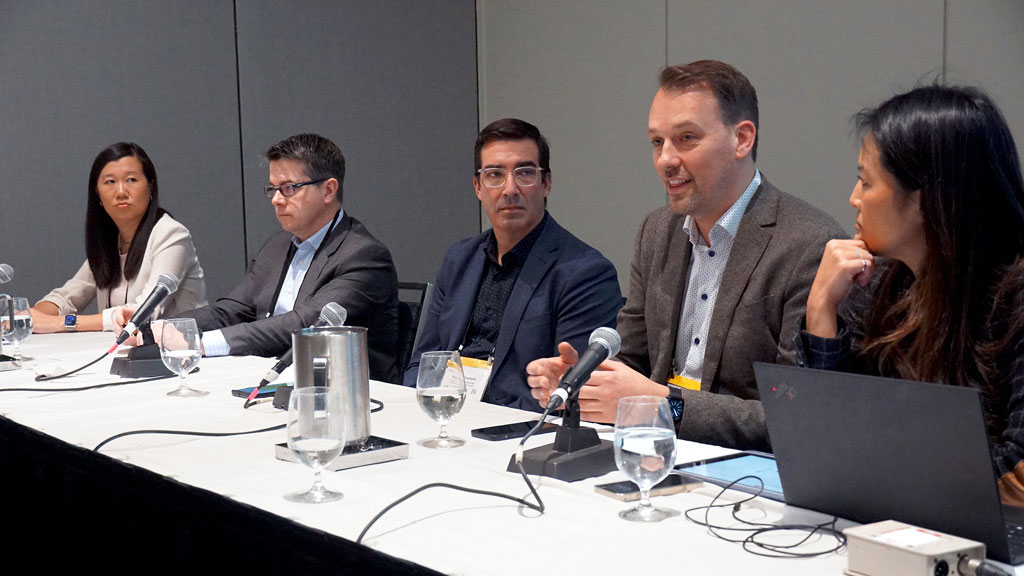Designers, builders and the legal profession need to collaborate on risk management strategies to mitigate loss due to the changing climate, according to a panel discussion recently at the Buildings Show in Toronto.
That collaboration can come in the form of Integrated Project Delivery (IPD), which “takes a different approach to projects,” the seminar’s moderator Andrea Lee, partner at law firm Glaholt Bowles LLP, said.
She said to her knowledge the CCDC’s (Canadian Construction Documents Committee) form for IPDs, released a few years ago, has resulted in only one project leading to litigation and it was at the subcontractor level.
Panellist Andrew Wallace, general counsel with PCL Constructors Inc., said he is seeing more progressive design builds and traditional bid-design builds that provide a front-end agreement that engage all parties in a project.
“It’s where all these issues can be worked through to achieve the client’s goals,” he said.
Owners and developers have “a tremendous role” to meet Canada’s climate targets, but going green doesn’t have to be “a cost adder,” said panellist Marc Couture, director of sustainability and energy management with the University of Toronto, one of the country’s largest developers.
Couture said the some of the university’s energy retrofits are proof that a developer can get preferential borrowing rates on projects while shifting risk more than typical for a capital project.
“We have done $100 million-plus decarbonization-focussed projects that are getting double digit guaranteed rates of return where we transferred a lot of the risk to our implementation partners.”
Couture, who leads a deep energy retrofit program to reduce energy consumption greenhouse gas emissions, said the university completes $600 to $800 million in projects annually.
“We want to turn our campus into a carbon sink where we capture or reduce more emissions than we are emitting.”
To meet that end the university has developed a set of design, energy and sustainability standards that “get baked into the contracts and obligations for the capital program.”
Wallace told the seminar audience buildings that meet green agendas aren’t always recognized by insurers.
Mass timber structures tick all the right boxes on sustainability but “insurers often don’t delineate mass timber from wood frame,” he said, adding insurance can cost up to 10 times more than coverage for conventional construction because insurers are concerned about fire and timber delamination.
Wallace added some insurers won’t cover solar projects for hail damage. A PCL solar project in Australia saw 40 per cent of its panels destroyed by a hailstorm.
The changing climate has also resulted in more frequent and severe convection storms (thunder storms) which have been “a big loss for insurers. It raises concerns about what they might do for those events.”
“It takes a lot of time to figure out the insurance strategy for a project and to ensure that the policy provides coverage everyone needs, the owner, the designer and the contractor,” Wallace said.
Panellist Steve Nonis, principal at Turner Fleischer Architects Inc., supports the Toronto Green Standard, the city’s sustainable design requirement, but the energy model in the standard “is being brought really close to the front of design, even before I understand what my building is going to be.”
Turner Fleischer relies on other design professionals including building science consultants to help understand the requirements and the risks the design team faces if building performance doesn’t meet energy targets.
Nonis told the seminar that how to make a more sustainable project with “all of the unknowns” of climate change is a challenge, but it is something the AEC sector has to tackle.
“It might take more time and more costs but it is inevitable that we do this,” he stated.
Potential litigation could be impetus for the design and building community to shift to sustainable and resilient features in their projects.
Panellist Lena Wang, of Glaholt Bowles, pointed to a case where insurers sued a local Illinois government because its stormwater system failed, causing flooding from heavy rains associated with climate change.
While the case was settled out of court, Wang said “it wouldn’t be a stretch to see design professionals involved (in litigation) in that scenario.”








Recent Comments